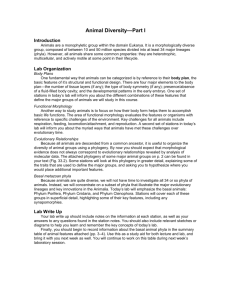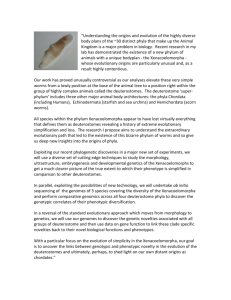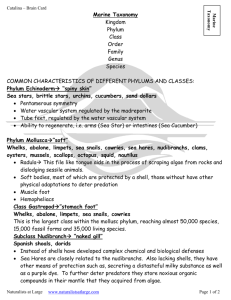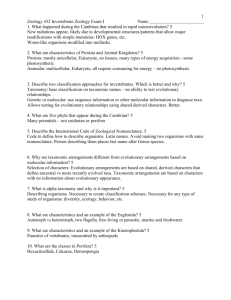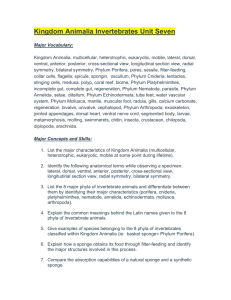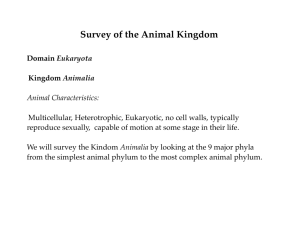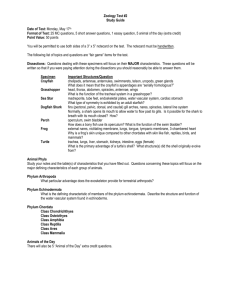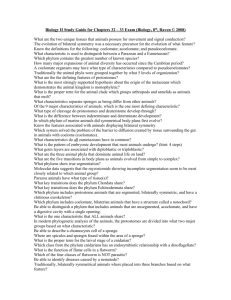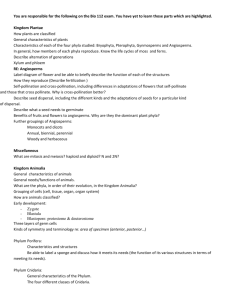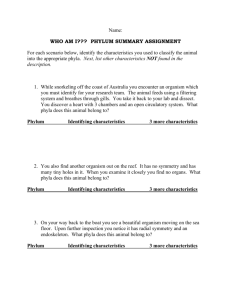File
advertisement
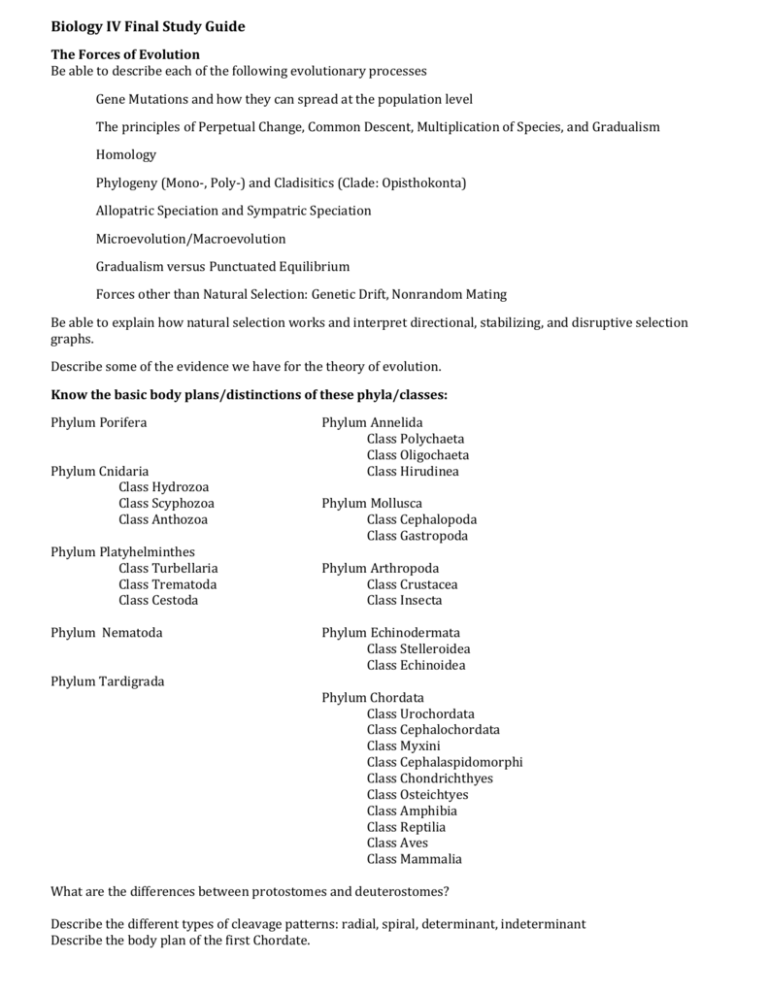
Biology IV Final Study Guide The Forces of Evolution Be able to describe each of the following evolutionary processes Gene Mutations and how they can spread at the population level The principles of Perpetual Change, Common Descent, Multiplication of Species, and Gradualism Homology Phylogeny (Mono-, Poly-) and Cladisitics (Clade: Opisthokonta) Allopatric Speciation and Sympatric Speciation Microevolution/Macroevolution Gradualism versus Punctuated Equilibrium Forces other than Natural Selection: Genetic Drift, Nonrandom Mating Be able to explain how natural selection works and interpret directional, stabilizing, and disruptive selection graphs. Describe some of the evidence we have for the theory of evolution. Know the basic body plans/distinctions of these phyla/classes: Phylum Porifera Phylum Cnidaria Class Hydrozoa Class Scyphozoa Class Anthozoa Phylum Platyhelminthes Class Turbellaria Class Trematoda Class Cestoda Phylum Nematoda Phylum Tardigrada Phylum Annelida Class Polychaeta Class Oligochaeta Class Hirudinea Phylum Mollusca Class Cephalopoda Class Gastropoda Phylum Arthropoda Class Crustacea Class Insecta Phylum Echinodermata Class Stelleroidea Class Echinoidea Phylum Chordata Class Urochordata Class Cephalochordata Class Myxini Class Cephalaspidomorphi Class Chondrichthyes Class Osteichtyes Class Amphibia Class Reptilia Class Aves Class Mammalia What are the differences between protostomes and deuterostomes? Describe the different types of cleavage patterns: radial, spiral, determinant, indeterminant Describe the body plan of the first Chordate. What were the first animals to invade land? What adaptations enabled them to complete this feat? What were the first chordates that invaded land? How did they accomplish this? What evidence do we have? Why is our picture of evolution incomplete? How does studying living organisms today help us understand evolutionary history? Why is this study also insufficient for completing the evolutionary story? How is the shape of life today a direct manifestation of irreversible/unrepeatable past events? Could there ever be another Cambrian Explosion? Human Evolution What are the distinguishing characteristics of each Hominid listed? Approx. what time period were they alive? What sets modern humans apart, if anything, from other hominids? Ardepithecus Ramidus Australopithecus Afarensis Australopithecus Africanus Homo Habilis Homo Erectus Homo Sapiens (Cro Magnon) Explain how the concept of emergent properties applies to human evolutionary development. Essay Topic: Complexity and Simplicity What is lost with increasing complexity? What is gained? Why is there a movement toward greater complexity within animal species over time? Why do some animals revert back to a simpler, more primitive form? Where are there examples in nature where a species has taken a path toward simplification of their body plan? What circumstances/situations might produce either pathway? How do the following differing characteristics correlate with an organism’s complexity? With it’s behavior and ability to interact with it’s environment? Why? Symmetry Coelom Body Systems Senses Size Regeneration Reproduction What is it that triggers increasing complexity? Why are some animal phyla restricted in their body size while others have species reaching great sizes? Where are there examples in nature where a species has taken a path toward simplification of their body plan? What circumstances/situations might produce this pathway? How do the behaviors of Cooperation and Competition contribute to evolutionary development and increases/decreases in complexity? How these strategies have led to successful evolutionary forms and the development of new species. How have these strategies allowed for the survival of mass extinctions and led to the dominance of new phyla/classes?
